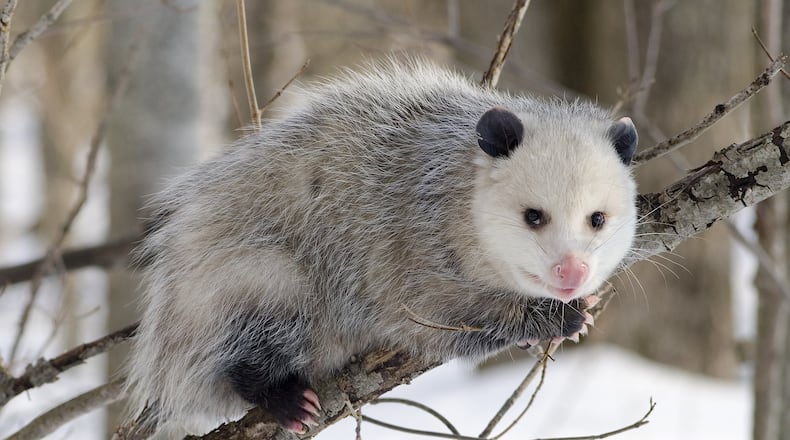When English naturalist John Lawson explored what is now North and South Carolina in 1700-1701, he was awed by what he described as one of the strangest creatures he had ever seen. “It is,” he wrote, “the Wonder of all the Land-Animals.”
I, too, have seen this weird being — right in my backyard. You’ve probably seen it, too. It’s an opossum, or, if you prefer, ’possum.
One of Georgia’s most common mammals, the opossum is indeed a wonder. It is a marsupial, related to kangaroos because it rears its young in a fur-lined pouch, which makes it unique among Georgia mammals. Just as unique is its ratlike, prehensile tail that helps it climb trees, hold onto branches and carry bundles of leaves to build a den.
No less strange is its body. The size of a large house cat, the opossum has beady eyes, a pink, snout-like nose and a mouth with 50 sharp teeth (the most of any North American mammal). Its hind paws resemble human hands. Its thick, gray fur always looks disheveled.
All of this has made the opossum one of America’s most studied and written-about creatures. It has inspired countless folk tales and phrases, such as “playing ‘possum,” which comes from its behavior of feigning death when threatened.
Scientists study opossums to understand, among other things, their apparent immunity to certain toxins, venoms and infections. Opossums, for instance, have a protein in their blood that neutralizes snake venom, meaning venomous snake bites have little or no effect on them.
This is a busy time of year for Georgia‘s opossums. They began mating in January and, with a gestation period of only 13 days, many of them are now giving birth — a process that is perhaps the most intriguing opossum trait of all.
The female delivers 16-18 babies so tiny that all could fit into a teaspoon. Blind and hairless, the newborns then must crawl through their mother’s fur into the pouch where they nurse — if they can find a nipple — for about 100 days. Only about seven or eight of them will survive.
IN THE SKY: From David Dundee, Tellus Science Museum astronomer: The moon will be new on Monday. Venus rises in the east a few hours before sunrise. Mars is low in the southwest at dusk. Jupiter and Saturn are low in the east just before sunrise.
About the Author
Keep Reading
The Latest
Featured


